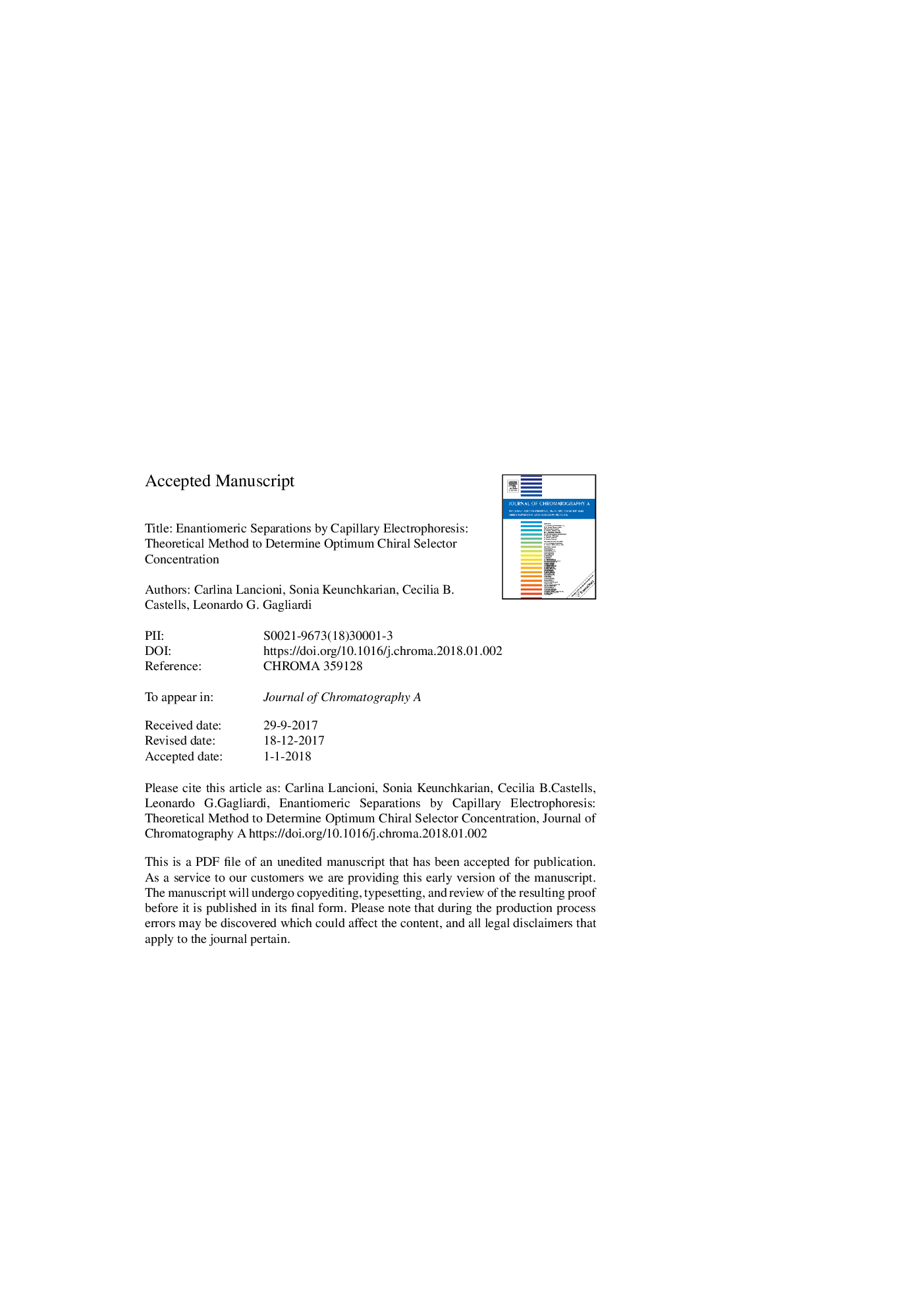| Article ID | Journal | Published Year | Pages | File Type |
|---|---|---|---|---|
| 7608750 | Journal of Chromatography A | 2018 | 29 Pages |
Abstract
A method to optimize the ligand concentration [S] in the background electrolyte of capillary electrophoresis separations is presented. It is based on the use of a model which predicts apparent electrophoretic mobilities as a function of ligand concentration (expressed as p[S]â¯=â¯âlog[S]). This model is employed to compose the expression of a recently proposed criterion to qualify separations in electrophoresis. Two strategies to find the optimum p[S], leading to the best separation of all compounds, are explained: 1.- a graphical method using a windows map depicting the single separation criteria between all possible combination of compounds by pairs, and 2.- an analytical method where an extended multicriterion optimization function is composed and optimum p[S] is found by mathematical maximization. The procedure is applied to a hard-to-separate model system: enantiomeric separations of racemic mixtures. 2-Hydroxypropyl-β-cyclodextrin was chosen as a model ligand, and four pharmaceutical drugs as model analytes. In order to demonstrate the performance of the procedure, results of electrophoretic separations obtained at p[S] found as optimum are compared with separations obtained at p[S] values slightly higher and lower than the optimum.
Related Topics
Physical Sciences and Engineering
Chemistry
Analytical Chemistry
Authors
Carlina Lancioni, Sonia Keunchkarian, Cecilia B. Castells, Leonardo G. Gagliardi,
